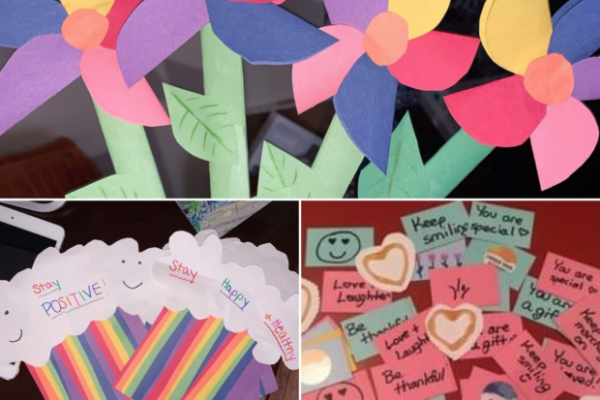Fulfilling a commitment


Jess Sciuva was nervous about leaving her car.
She sat in the parking lot of Columbus Colony Elderly Care, a Westerville-based nursing home where she was assigned to work with Deaf, DeafBlind and Hard of Hearing older adults as part of her American Sign Language service-learning course.
She had only taken three semesters of American Sign Language and questioned if she knew enough of the language to communicate with residents.
She ended up stepping out of her comfort zone and into the nursing home where she and eight other Ohio State ASL students were introduced to the residents.
For the past six weeks, Sciuva applied her sign language skills to connect with the older adults by playing games, asking questions about their lives and sharing details about her own.
When Ohio State moved to virtual classes to prevent the spread of COVID-19, Sciuva immediately thought of some of the Columbus Colony residents she bonded with and the promise she made about visiting them after spring break.
“At first, it was a shock to the system,” said Sciuva, who graduates in May with an undergraduate degree in pre-med neuroscience. “But with the support of our instructors, we learned there are other ways to have an impact on the residents and let them know that we care.”
The service-learning course, The Intersection of American Sign Language, Deaf Culture, and the Deaf Community, has been a transformative experience for students, said Kristin Wickham-Saxon, who co-teaches it with Marla Berkowitz.
Most ASL students have had little to no interaction with a Deaf or Hard of Hearing person, and the class gives them an opportunity to apply their language skills in the community for the first time, Wickham-Saxon said.
But the health crisis surrounding COVID-19 has compelled students this semester to take action in ways Wickham-Saxon and Berkowitz didn’t expect.
“They have this extra layer of emotional connection,” Wickham-Saxon said. “It’s added a whole different dimension that we never could have anticipated.”
As part of her service project, Leah Baker launched a T-shirt fundraiser for Deaf World Against Violence Everywhere, a nonprofit that serves survivors in Ohio's Deaf community who have experienced domestic violence or sexual assault. She was in the middle of the project when Ohio State moved to distance learning.
For Baker, it was important to continue the project as fundraising has been a concern for the nonprofit, which serves all of Ohio with only two full-time employees. She maintained the fundraising campaign through this week. Her initial goal was to sell 50 shirts; she ended up selling 400 and raised $4,000.
“The organization has been so welcoming to us and created a space that allowed for learning,” she said. “They connect different communities together, and it was cool to be a part of that.”
Meanwhile, Sciuva organized care packages for Columbus Colony’s residents that included cards, letters and crafts from her, her ASL peers and her roommates. In her letters, she wrote about how much she wanted to be there and encouraged residents to stay positive and safe. Altogether, the group sent 170 pieces of mail, one for every resident.
For the DeafBlind residents, she and her roommate crafted paper flowers that they could hold and feel.
Sylvia Gakuo, the activities director at Columbus Colony, said she is grateful for Sciuva’s thoughtfulness. The cards and notes are currently on display in the nursing home’s bulletin board.
“That board brings smiles to both staff and residents at a time when residents can’t go anywhere or receive visitors,” she said. “They feel loved and know that someone somewhere cares.”
Sciuva said her time at the nursing home has inspired her to become a deaf ally as she prepares for medical school at Ohio State in the fall. She hopes to start a student organization that advocates for the Deaf community.
“A big thing in the medical community is to know that deafness is not a disability,” she said. “I want to bring that cultural idea to medical education.”
